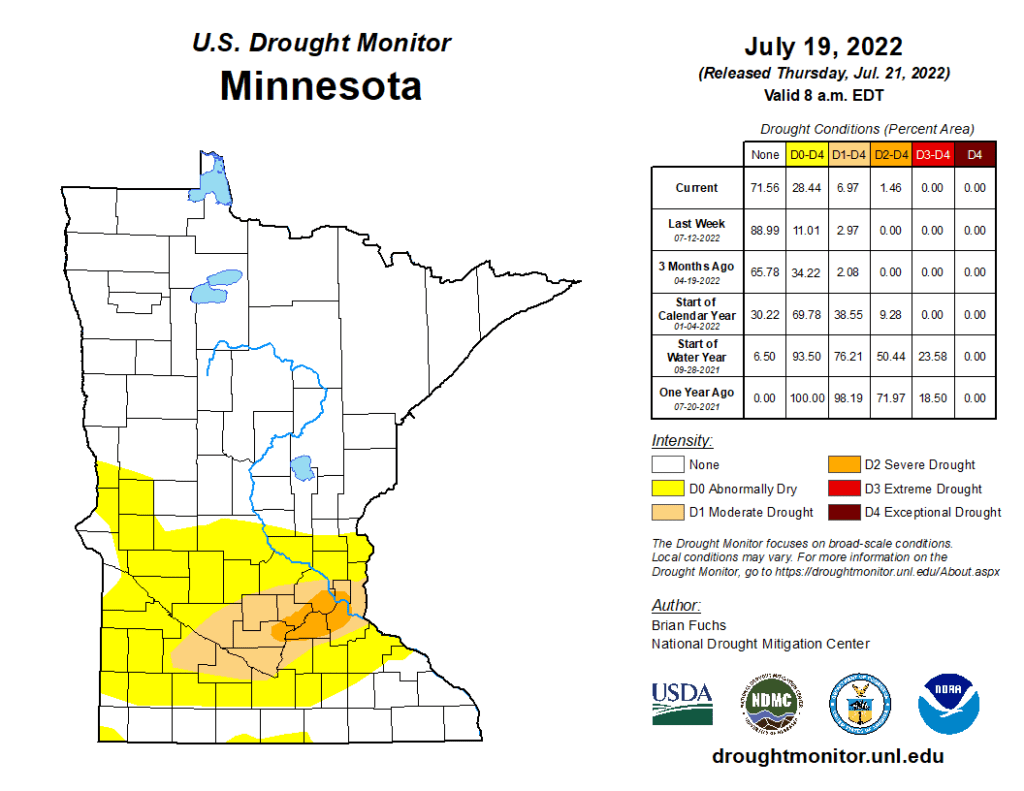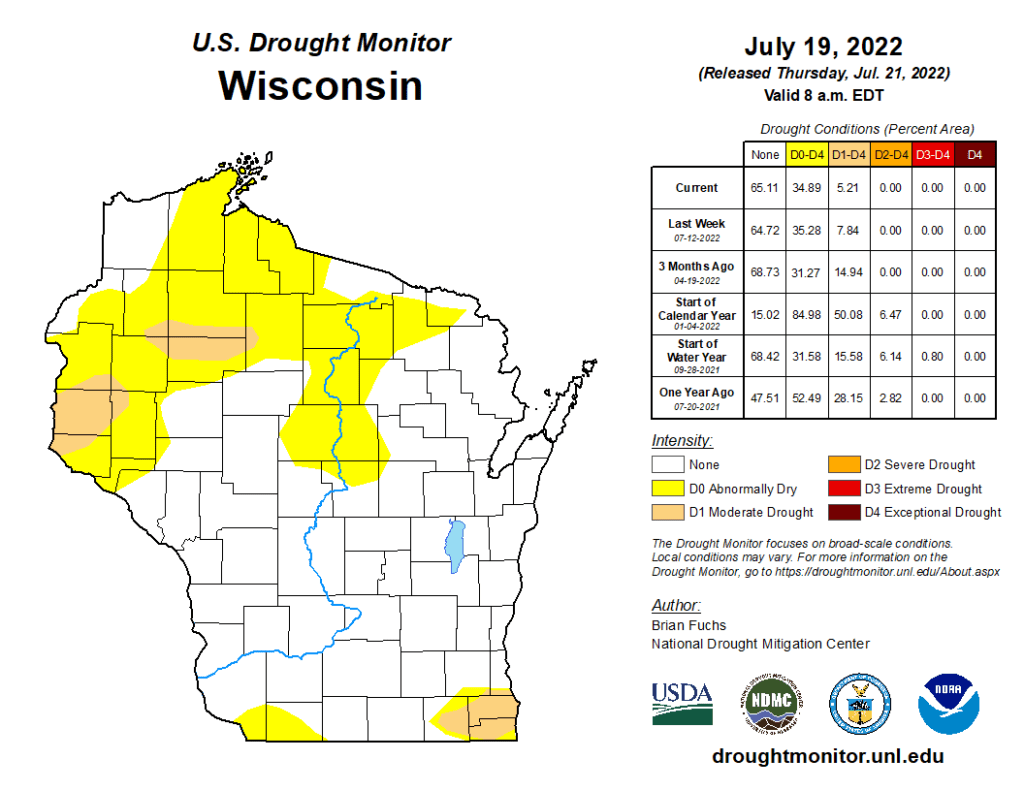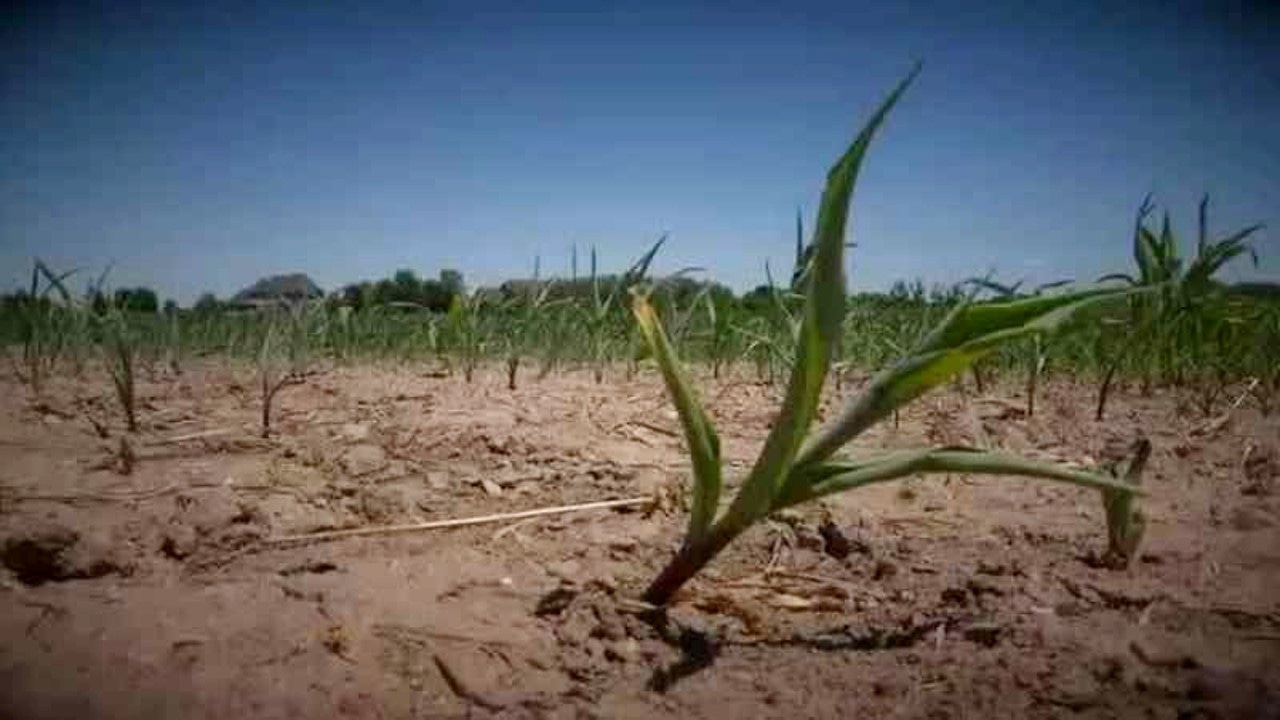Severe drought conditions issued for metro area, moderate drought area expands
[anvplayer video=”5123834″ station=”998122″]
New data from the U.S. Drought Monitor shows drought conditions are worsening in parts of Minnesota.
As previously reported last week, a portion of the state, including the metro area, was listed as having moderate drought conditions.
However, dry and hot weather has pushed the severity in the metro area to severe drought, including portions of Dakota, Ramsey, Hennepin, Carver, Sibley counties and nearly all of Scott County.
Surrounding counties reaching from the Wisconsin border to Redwood County are listed as having moderate drought conditions. Much of central and southern Minnesota are listed as having abnormally dry conditions.

In western Wisconsin, nearly all of St. Croix County is listed as having moderate drought conditions, as well as parts of Polk, Dunn and Pierce counties. Surrounding counties have abnormally dry conditions.

According to 5 EYEWITNESS NEWS Chief Meteorologist Ken Barlow, through Wednesday, July 20, the Twin Cities had received only 2.01 inches of rainfall since June 1. During the same time period, Barlow says the region should have received about 7.28 inches of rain, meaning the area is currently about 5.27 inches below normal.
Barlow says this is the case across most of the metro area, with conditions improving across Greater Minnesota.

(KSTP/FILE)
Earlier this year, 5 EYEWTINESS NEWS meteorologist Matt Serwe said Minneapolis-St. Paul International Airport was nearly 3 inches wetter than average in the middle of May.
Nick Kantola with Rainbow Treecare said he’s keeping busy during the drought. He explained when there’s not enough water for plants to drink, their health goes downhill.
“They can’t feed themselves. They can’t turn water into energy. Water and sunlight become energy for trees,” Kantola said.
National Weather Service meteorologists said the average amount of rainfall is not keeping up with the normal totals from the past.
“It’s not unheard of. We have seen worse conditions. It’s not nearly as bad as it was last year, thankfully, but it’s not looking good,” NWS meteorologist Caleb Grunzke said.
The drought is leading to farmers fighting the dry climate, rivers running low and yards drying up.
“We’re seeing drought all throughout the metro. Not just suburban and urban areas. We’re seeing it out in areas where the impacts of drought would be lesser. We’re still seeing those effects,” Kantola said.